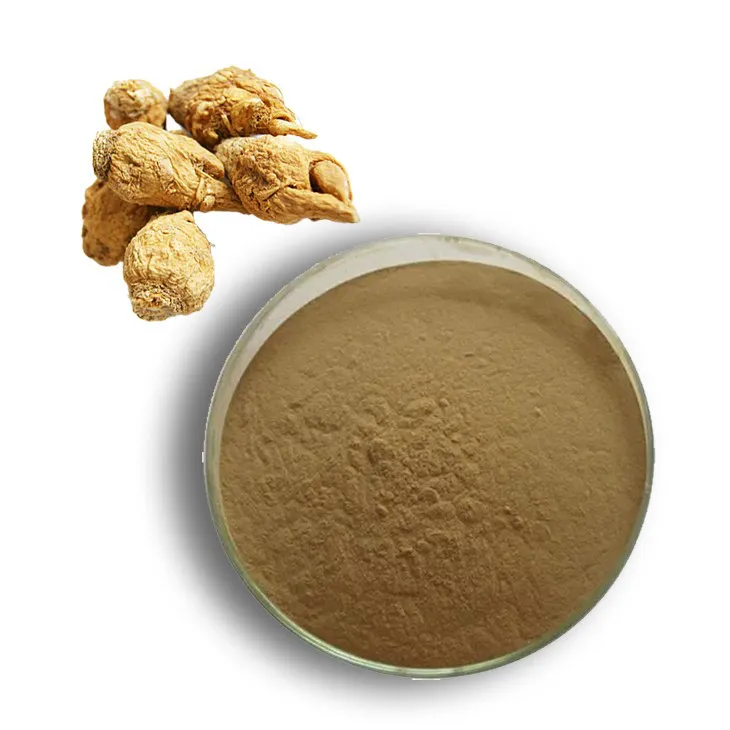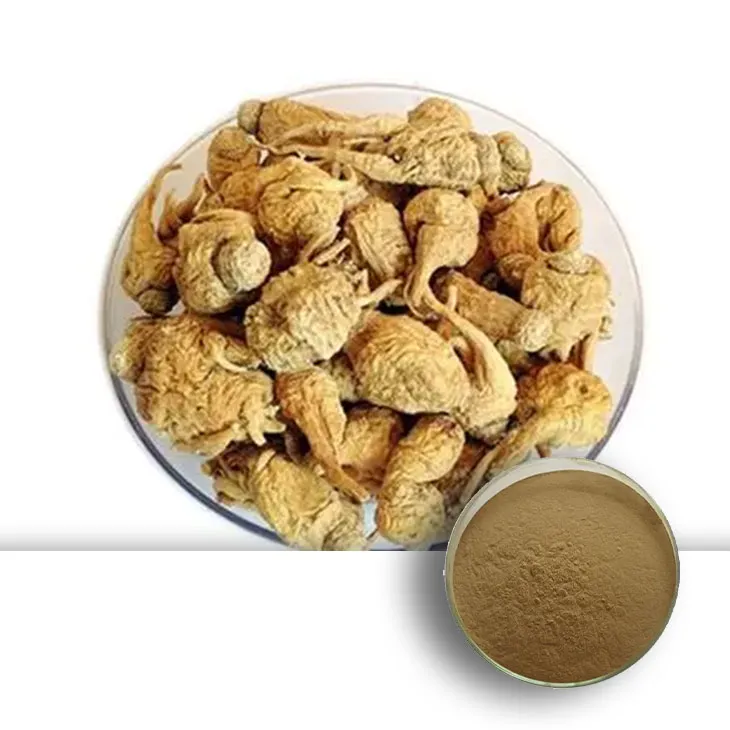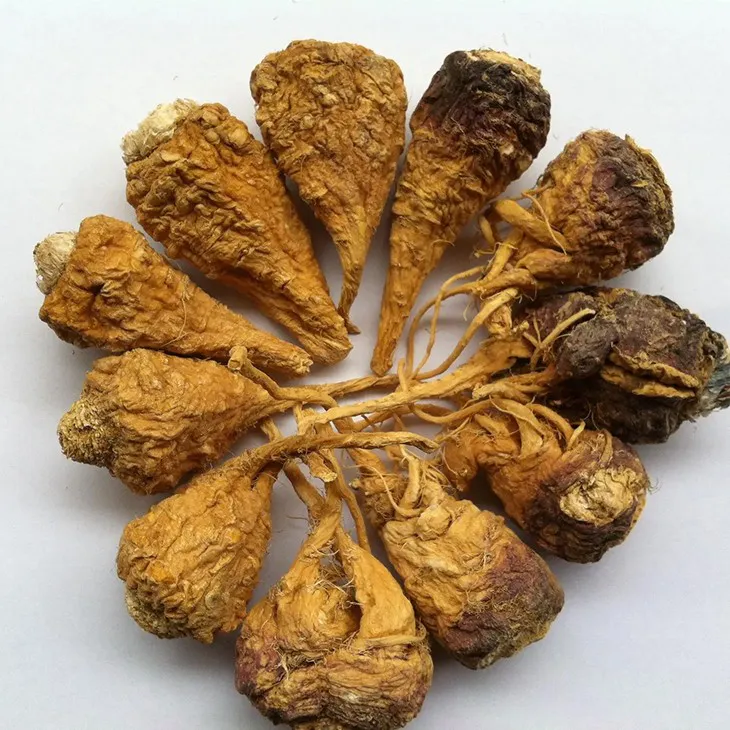- 0086-571-85302990
- sales@greenskybio.com
The best method for extracting Maca extract.
2024-11-29

1. Introduction
Maca, a plant native to the high altitudes of the Andes in Peru, has been used for centuries due to its numerous health - promoting properties. Maca Extract is rich in various bioactive compounds such as macamides, macaenes, alkaloids, and polysaccharides. These compounds are responsible for its potential effects on energy enhancement, hormonal balance, and improved sexual function, among others. However, the extraction of these valuable components from maca roots requires careful consideration of different methods to ensure high efficiency, purity, and preservation of the active compounds.

2. Traditional Extraction Methods
2.1. Infusion
Infusion is one of the simplest traditional methods. It involves soaking maca root powder in hot water, much like making a tea.
- The process is relatively straightforward. Maca powder is added to hot water and left to steep for a period, usually between 10 - 30 minutes.
- However, this method has limitations. The extraction efficiency is relatively low as it may not be able to fully extract all the bioactive compounds. Only the water - soluble components are predominantly extracted, leaving behind many of the lipophilic compounds such as macamides and macaenes.
2.2. Decoction
Decoction is another traditional approach. In this method, maca root is boiled in water for an extended period.
- Typically, the maca root is cut into small pieces and placed in boiling water. The boiling process can last from 30 minutes to several hours.
- While it can extract more compounds compared to infusion due to the longer exposure to heat and water, it also has drawbacks. Prolonged boiling may cause degradation of some heat - sensitive active compounds. For example, certain alkaloids may be affected by the high temperature and long - duration boiling, reducing the overall quality of the extract.

3. Modern Extraction Methods
3.1. Maceration
Maceration is a modern extraction technique that involves soaking maca root in a solvent, usually ethanol or a mixture of ethanol and water.
- The maca root is first ground into a fine powder and then placed in the solvent. The mixture is left to stand for a period, which can range from days to weeks, depending on the desired extraction level.
- One advantage of maceration is that it can extract a wider range of compounds compared to traditional aqueous methods. Ethanol is able to dissolve both water - soluble and lipophilic compounds, thus increasing the overall yield of bioactive substances.
- However, a long maceration time may be required to achieve high extraction efficiency, and the process needs to be carefully monitored to prevent microbial growth in the solvent - maca mixture.
3.2. Soxhlet Extraction
Soxhlet extraction is a well - known and widely used method in modern laboratories.
- In this method, maca powder is placed in a Soxhlet extractor, and a suitable solvent (such as ethanol or hexane) is continuously circulated through the sample. The solvent is evaporated, condensed, and then recycled back to the extraction chamber.
- It has a high extraction efficiency as the continuous circulation of the solvent ensures that fresh solvent is constantly in contact with the maca sample, maximizing the extraction of bioactive compounds.
- Nevertheless, Soxhlet extraction has some limitations. It is a time - consuming process, often taking several hours to days. Additionally, the high - temperature and long - duration extraction may lead to the degradation of some thermally sensitive compounds.
3.3. Supercritical Fluid Extraction (SFE)
Supercritical Fluid Extraction (SFE) is a state - of - the - art extraction method.
- Supercritical fluids, such as carbon dioxide (CO₂) in its supercritical state, are used as the extraction solvent. Supercritical CO₂ has properties similar to both gases and liquids, which makes it an excellent solvent for extracting bioactive compounds from maca.
- One of the main advantages of SFE is its selectivity. By adjusting the pressure and temperature, it is possible to selectively extract specific compounds from maca. For example, different macamides and macaenes can be preferentially extracted depending on the operating conditions.
- Moreover, SFE is a clean and environmentally friendly method as CO₂ is non - toxic, non - flammable, and can be easily removed from the extract, leaving behind a pure product. However, the equipment for SFE is relatively expensive, which may limit its widespread use in small - scale or developing - world settings.
3.4. Ultrasonic - Assisted Extraction
Ultrasonic - Assisted Extraction utilizes ultrasonic waves to enhance the extraction process.
- During this extraction, maca powder is placed in a solvent (such as ethanol - water mixture), and ultrasonic waves are applied. The ultrasonic waves create cavitation bubbles in the solvent, which collapse violently, generating high - pressure and high - temperature micro - environments.
- This helps in breaking the cell walls of maca root more effectively, facilitating the release of bioactive compounds into the solvent. As a result, ultrasonic - assisted extraction can significantly increase the extraction efficiency compared to traditional methods.
- However, the optimization of ultrasonic parameters such as frequency, power, and extraction time is crucial. Incorrect settings may lead to incomplete extraction or even degradation of some compounds.
3.5. Microwave - Assisted Extraction
Microwave - Assisted Extraction employs microwave energy to accelerate the extraction process.
- When maca powder is mixed with a solvent and exposed to microwaves, the microwaves cause rapid heating of the solvent - maca mixture. This rapid heating leads to an increase in the solubility of bioactive compounds and the rupture of cell walls, enhancing the extraction process.
- Compared to traditional heating methods, microwave - assisted extraction is much faster. It can reduce the extraction time from hours to minutes.
- Nevertheless, the method requires careful control of microwave power and exposure time. Overexposure to microwaves may cause overheating and degradation of some heat - sensitive compounds.

4. Factors Affecting the Choice of Extraction Method
4.1. Efficiency
Efficiency is a crucial factor in determining the extraction method. High - efficiency methods are preferred as they can extract a greater amount of bioactive compounds in a shorter time.
- For example, Soxhlet extraction and supercritical fluid extraction are known for their relatively high extraction efficiencies. Soxhlet extraction can continuously expose the sample to fresh solvent, while supercritical fluid extraction can selectively target and extract specific compounds with high efficiency.
- However, efficiency should not be the only consideration. Other factors such as the preservation of active compounds and cost also play important roles.
4.2. Purity
Purity of the extract is essential, especially for pharmaceutical and nutraceutical applications.
- Supercritical fluid extraction offers high purity as it can produce a clean extract with minimal solvent residues. The ability to easily remove the supercritical CO₂ solvent leaves behind a pure product.
- On the other hand, traditional methods such as infusion and decoction may result in extracts with impurities from the maca root itself or from the reaction products during the extraction process.
4.3. Preservation of Active Compounds
Preservation of Active Compounds is vital to ensure the effectiveness of the Maca Extract.
- Ultrasonic - assisted extraction and microwave - assisted extraction, when properly optimized, can preserve the active compounds well. The short extraction times associated with these methods reduce the exposure of the compounds to potentially degrading factors such as heat.
- Conversely, traditional long - boiling methods like decoction may cause the degradation of heat - sensitive alkaloids and other bioactive substances.
4.4. Cost
Cost is an important practical consideration.
- Traditional methods such as infusion and decoction are relatively inexpensive as they require minimal equipment and simple processes. However, they may not provide the best quality extract in terms of efficiency and purity.
- Modern methods like supercritical fluid extraction, while offering many advantages in terms of selectivity and purity, are costly due to the expensive equipment required and the high - energy consumption in some cases.
5. Conclusion
There is no one - size - fits - all best method for extracting Maca Extract. The choice of extraction method depends on various factors including efficiency, purity requirements, preservation of active compounds, and cost. Traditional methods like infusion and decoction are simple and cost - effective but may not be optimal in terms of efficiency and purity. Modern methods such as supercritical fluid extraction, ultrasonic - assisted extraction, and microwave - assisted extraction offer higher efficiencies and better preservation of active compounds in some cases, but they may come with higher costs or require more complex equipment. Therefore, when considering the extraction of maca extract, a comprehensive evaluation of these factors is necessary to select the most suitable method for a particular application.
FAQ:
What are the traditional methods for extracting Maca extract?
Traditional methods for extracting Maca extract may include maceration and decoction. Maceration involves soaking the Maca in a solvent, usually an alcohol - based solvent or water, for a period of time to allow the active compounds to dissolve. Decoction is a process where Maca is boiled in water to extract its components. However, these traditional methods may have limitations in terms of efficiency and purity compared to modern techniques.
How do modern extraction methods improve the quality of Maca extract?
Modern extraction methods such as supercritical fluid extraction (SFE) and ultrasonic - assisted extraction can significantly improve the quality of Maca extract. SFE, often using carbon dioxide as the supercritical fluid, offers high selectivity, which means it can target specific active compounds more precisely. This results in a higher purity of the extract. Ultrasonic - assisted extraction uses ultrasonic waves to disrupt the cell walls of Maca more effectively, leading to a more efficient release of active compounds, thus enhancing the overall quality of the extract.
What factors should be considered when choosing an extraction method for Maca?
When choosing an extraction method for Maca, several factors need to be considered. Firstly, the efficiency of the method in extracting the active compounds is crucial. A good extraction method should be able to extract a high amount of the desired bioactive substances. Secondly, purity is important. The extract should be free from contaminants and have a high concentration of the active ingredients. Thirdly, the preservation of the active compounds during the extraction process is vital. Some extraction methods may cause degradation of the active compounds, so a method that can maintain their integrity is preferred. Additionally, cost - effectiveness and scalability of the extraction method are also factors to take into account.
Are there any environmental impacts associated with different Maca extraction methods?
Yes, different Maca extraction methods can have environmental impacts. For example, some traditional solvent - based extraction methods may use large amounts of organic solvents, which if not properly managed, can be a source of environmental pollution. On the other hand, modern methods like supercritical fluid extraction, especially when using carbon dioxide, can be more environmentally friendly as carbon dioxide is a natural and non - toxic substance. However, the equipment for such modern methods may require more energy during operation, which also has an environmental footprint.
How can the purity of Maca extract be determined?
The purity of Maca extract can be determined through various analytical techniques. High - performance liquid chromatography (HPLC) is commonly used. It can separate and quantify the different components in the Maca extract, allowing for the determination of the concentration of active compounds and the detection of any impurities. Gas chromatography - mass spectrometry (GC - MS) can also be used, especially for analyzing volatile components in the extract. Spectroscopic techniques such as ultraviolet - visible spectroscopy (UV - Vis) can provide information about the overall composition of the extract and can be used as a preliminary method for assessing purity.
Related literature
- Advanced Extraction Techniques for Maca Bioactive Compounds"
- "Optimizing Maca Extraction: A Review of Traditional and Modern Approaches"
- "Purity Assessment in Maca Extract Production: Analytical Methods and Significance"
- ▶ Hesperidin
- ▶ citrus bioflavonoids
- ▶ plant extract
- ▶ lycopene
- ▶ Diosmin
- ▶ Grape seed extract
- ▶ Sea buckthorn Juice Powder
- ▶ Beetroot powder
- ▶ Hops Extract
- ▶ Artichoke Extract
- ▶ Reishi mushroom extract
- ▶ Astaxanthin
- ▶ Green Tea Extract
- ▶ Curcumin Extract
- ▶ Horse Chestnut Extract
- ▶ Other Problems
- ▶ Boswellia Serrata Extract
- ▶ Resveratrol Extract
- ▶ Marigold Extract
- ▶ Grape Leaf Extract
- ▶ blog3
- ▶ blog4
-
Extraction process of stevia extract.
2024-11-29
-
Chinese Grape Seed Extract Powder Factory.
2024-11-29
-
Vitamin K2 in China vs. the United States.
2024-11-29
-
Nature's Bounty L - Arginine
2024-11-29
-
White mustard seed extract
2024-11-29
-
Black Pepper Extract
2024-11-29
-
Maitake Mushroom Extract
2024-11-29
-
Centella Asiatica Extract
2024-11-29
-
Boswellia Serrata Extract
2024-11-29
-
Garcinia Cambogia Extract
2024-11-29
-
Chaste Berry Extract
2024-11-29
-
Thunder God Vine Extract
2024-11-29
-
Hops Extract
2024-11-29
-
Passionflower Extract
2024-11-29





















